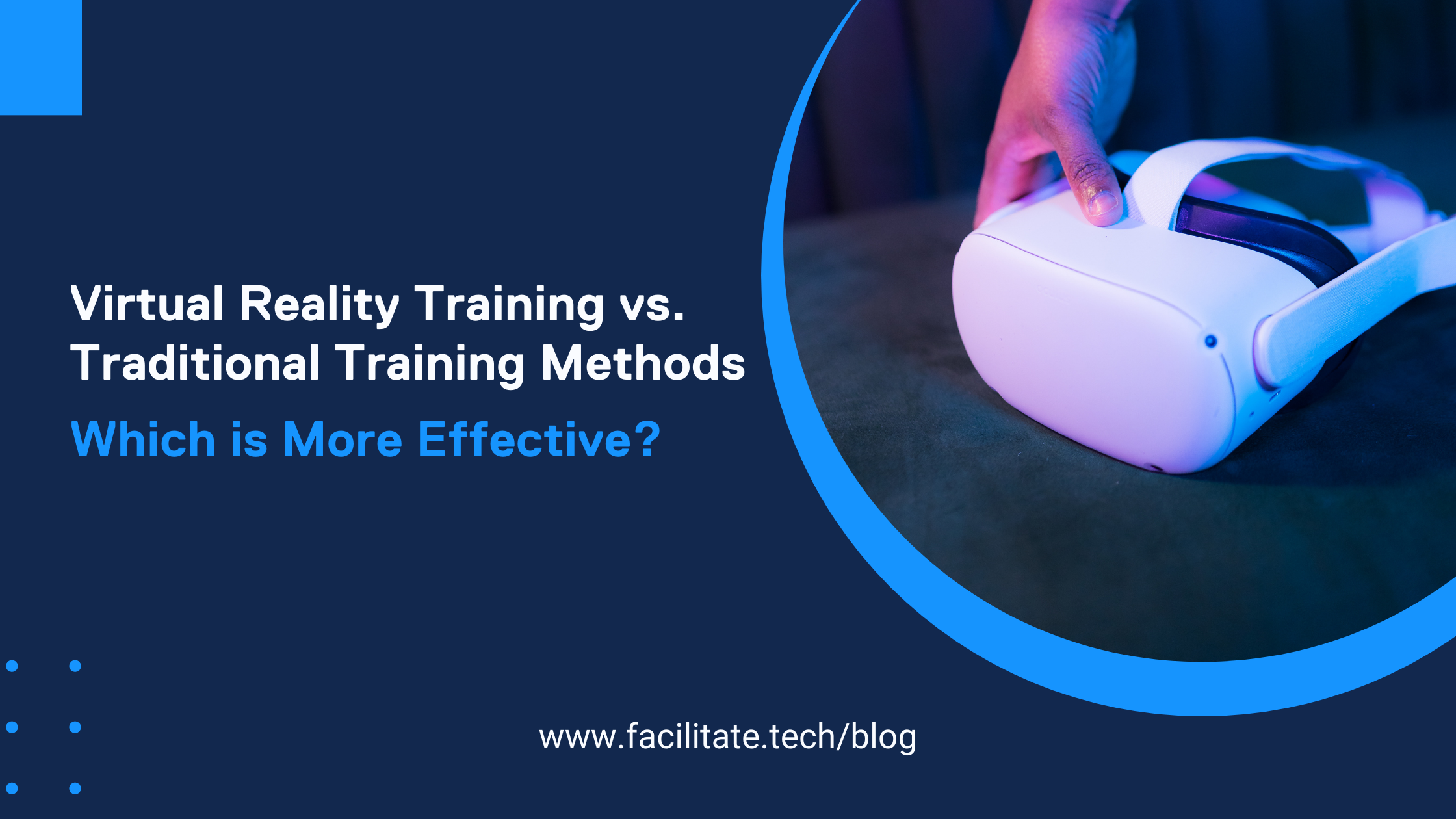Virtual Reality vs. Traditional Training Methods: Which is More Effective?

Virtual reality (VR) has taken the world by storm in recent years, with more and more organizations adopting the technology to enhance their training and learning programs.
With the rise of remote work and the need to upskill employees in a cost-effective and efficient manner, VR training has emerged as a compelling alternative to traditional training methods.
In this article, we'll explore the effectiveness of VR training compared to other methods.
What is Virtual Reality Training?
VR training is a technology-based training approach that uses virtual environments to simulate real-life scenarios.
Using a VR headset, learners can experience situations that might otherwise be too expensive, dangerous, or impractical to recreate in real life.
VR learning content can come in different forms, with 360 degree media allowing learners to see real-life locations and situations, whereas 3D graphics allow for simulation of virtual experiences and processes.
The technology provides a sense of presence and immersion that helps learners feel as though they are physically present in the simulated environment.
How does VR Training compare to In-Person Training?
In-person training has been the traditional method for employee training for a long time. It is a familiar approach, and many organizations still rely on it. However, in-person training can be expensive, time-consuming, and difficult to scale.
The cost of travel, accommodation, and instructor fees can be prohibitive for small businesses or organizations with a large number of employees. Additionally, scheduling in-person training can be difficult, especially if employees are located in different parts of the world.
On the other hand, VR training provides a cost-effective and flexible alternative to in-person training. With VR training, learners can participate in training programs from anywhere, at any time.
There is no need for expensive travel and accommodation costs, and learners can practice their skills in a safe, controlled environment.
This is particularly important for industries such as construction, mining, or manufacturing, where safety is paramount. We have one client that is able to save $00,000s per training session by using a virtual environment compared to the real life equipment used in their in-person approach.
In-person training also relies heavily on the instructor to guide the learning experience. This can lead to inconsistencies in training quality, depending on the instructor's knowledge and expertise. In contrast, VR training provides a consistent experience for all learners. The training is designed to be repeatable and scalable, ensuring that every learner receives the same quality of training.
How does VR Training compare to Blended Learning?
Blended learning is a hybrid training approach that combines online learning with in-person training. This approach allows learners to access training materials and resources online, while still having the opportunity to interact with instructors and peers in person.
Blended learning has become increasingly popular in recent years, as it provides a balance between flexibility and interactivity.
However, blended learning can be challenging to implement effectively. It requires careful planning and coordination to ensure that learners receive the same quality of training online as they would in person. It can also be difficult to ensure that all learners have access to the same resources and support, particularly if they are located in different parts of the world.
VR training offers a compelling alternative to blended learning. VR training combines the flexibility of online learning with the interactivity of in-person training. Learners can access training materials and resources online, while still having the opportunity to practice their skills in a safe, controlled environment.
Additionally, VR training can provide a more engaging and memorable learning experience than traditional online learning.
It should be noted that VR can also form part of a structured blended learning program, supplementing more experiential learning content in VR with less engaging or overly theoretical eLearning content.
How does VR Training compare to other digital mediums?
VR training is not the only digital medium available for training and learning. E-learning, online training, and simulations are all popular digital mediums used in education and training. While these methods are effective in many cases, they lack the sense of presence and immersion that VR training provides.
E-learning and online training provide a flexible and cost-effective way to deliver training programs. However, they can be impersonal and lack interactivity. Learners may feel disconnected from the training material and may struggle to engage with the content.
In contrast, VR training provides a more engaging and immersive learning experience. Learners can interact with the training material and practice their skills in a way that feels more realistic and relevant to their day-to-day jobs.
If you are a Learning & Development professional who is serious about making the most of this technology, contact the Facilitate team, or check out our features page to find out how you could apply virtual reality training to your organization.
